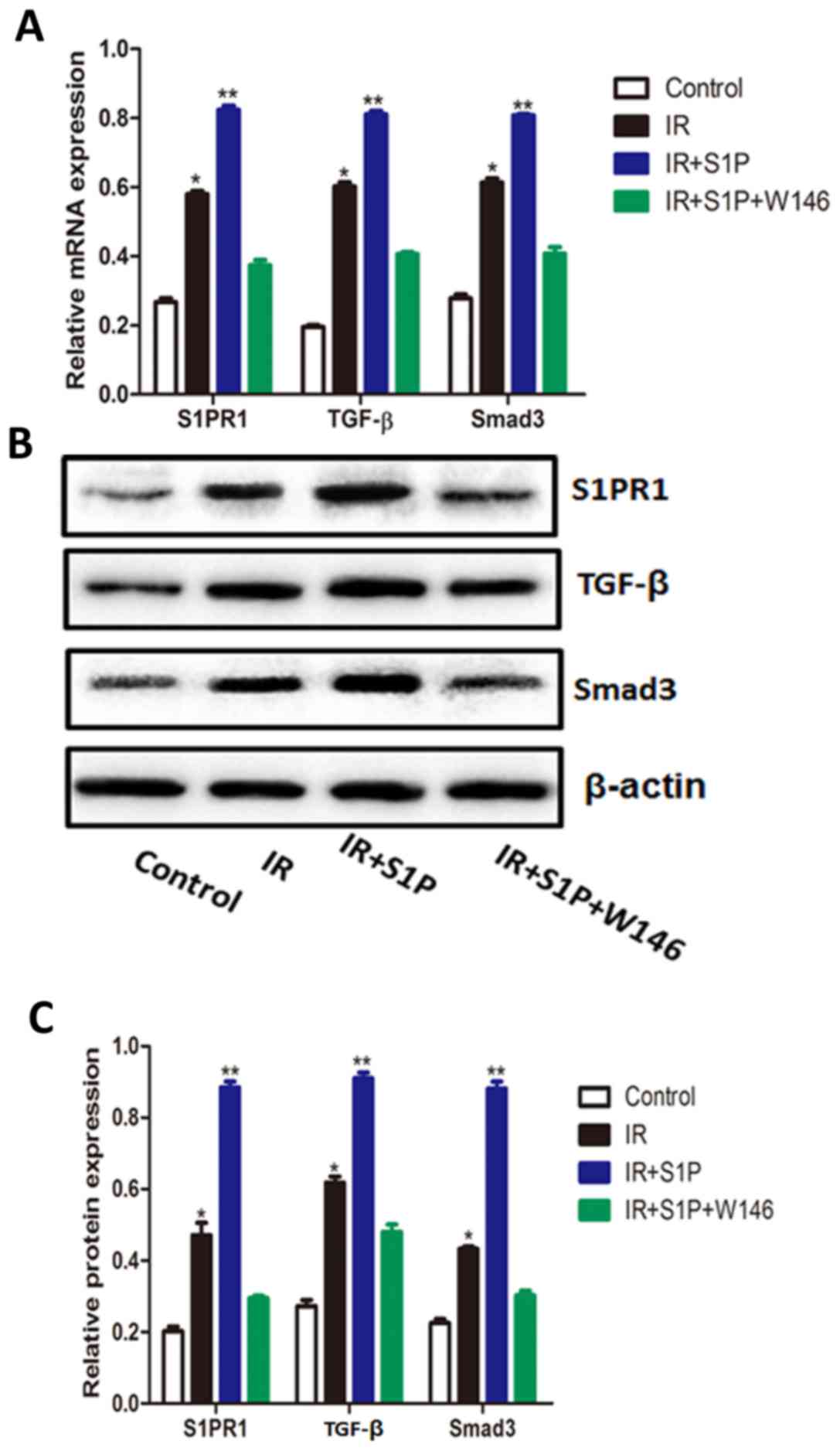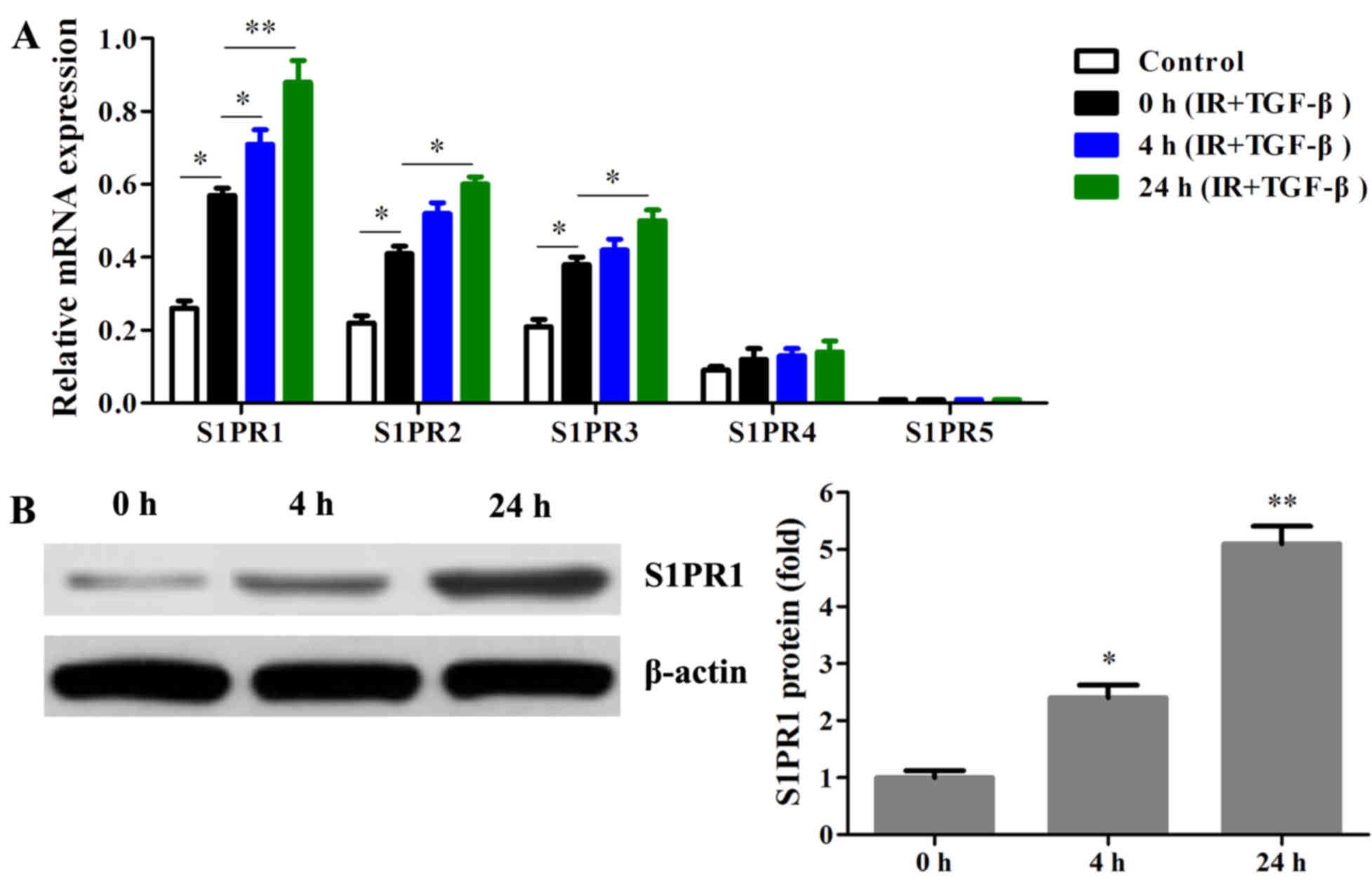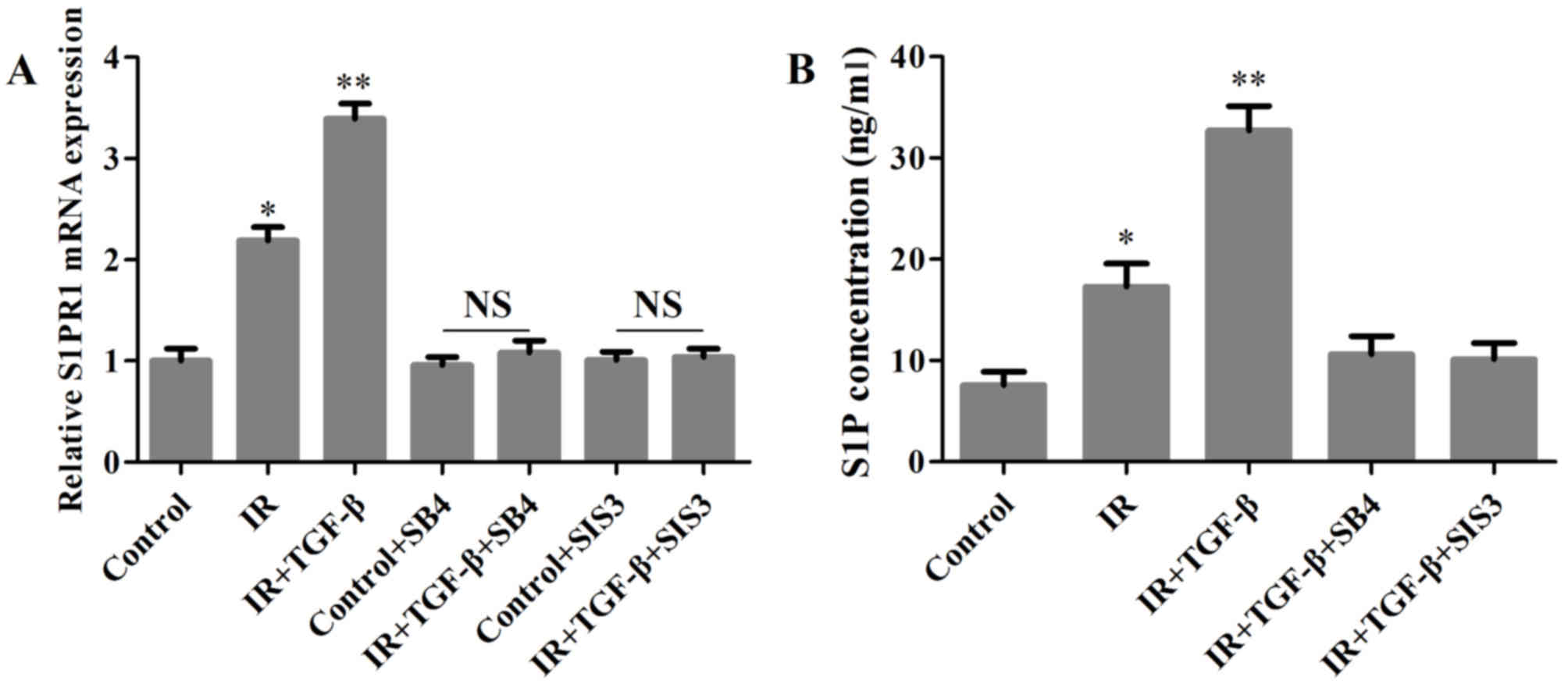|
1
|
Hausenloy DJ and Yellon DM: Myocardial
ischemia-reperfusion injury: A neglected therapeutic target. J Clin
Invest. 123:92–100. 2013. View
Article : Google Scholar : PubMed/NCBI
|
|
2
|
Braunwald E and Kloner RA: Myocardial
reperfusion: A double-edged sword? J Clin Invest. 76:1713–1719.
1985. View Article : Google Scholar : PubMed/NCBI
|
|
3
|
Piper HM, Garcia-Dorado D and Ovize M: A
fresh look at reperfusion injury. Cardiovasc Res. 38:291–300. 1998.
View Article : Google Scholar : PubMed/NCBI
|
|
4
|
Yellon DM and Hausenloy DJ: Myocardial
reperfusion injury. N Engl J Med. 357:1121–1135. 2007. View Article : Google Scholar : PubMed/NCBI
|
|
5
|
Hearse DJ and Tosaki A: Free radicals and
reperfusion-induced arrhythmias: Protection by spin trap agent PBN
in the rat heart. Circ Res. 60:375–383. 1987. View Article : Google Scholar : PubMed/NCBI
|
|
6
|
Kloner RA, Bolli R, Marban E, Reinlib L
and Braunwald E: Medical and cellular implications of stunning,
hibernation, and preconditioning: An NHLBI workshop. Circulation.
97:1848–1867. 1998. View Article : Google Scholar : PubMed/NCBI
|
|
7
|
Krug A, Du Mesnil de Rochemont and Korb G:
Blood supply of the myocardium after temporary coronary occlusion.
Circ Res. 19:57–62. 1966. View Article : Google Scholar : PubMed/NCBI
|
|
8
|
Rosen H, Sanna Germana M, Gonzalez-Cabrera
PJ and Roberts E: The organization of the sphingosine 1-phosphate
signaling system. Curr Top Microbiol Immunol. 378:1–21.
2014.PubMed/NCBI
|
|
9
|
Ishii I, Fukushima N, Ye X and Chun J:
Lysophospholipid receptors: Signaling and biology. Annu Rev
Biochem. 73:321–354. 2004. View Article : Google Scholar : PubMed/NCBI
|
|
10
|
Im DS, Heise CE, Ancellin N, O'Dowd BF,
Shei GJ, Heavens RP, Rigby MR, Hla T, Mandala S, McAllister G, et
al: Characterization of a novel sphingosine 1-phosphate receptor,
Edg-8. J Biol Chem. 275:14281–14286. 2000. View Article : Google Scholar : PubMed/NCBI
|
|
11
|
Gräler MH, Grosse R, Kusch A, Kremmer E,
Gudermann T and Lipp M: The sphingosine 1-phosphate receptor S1P4
regulates cell shape and motility via coupling to Gi and G12/13. J
Cell Biochem. 89:507–519. 2003. View Article : Google Scholar : PubMed/NCBI
|
|
12
|
Knapp M: Cardioprotective role of
sphingosine-1-phosphate. J Physiol Pharmacol. 62:601–607.
2011.PubMed/NCBI
|
|
13
|
Theilmeier G, Schmidt C, Herrmann J, Keul
P, Schäfers M, Herrgott I, Mersmann J, Larmann J, Hermann S,
Stypmann J, et al: High-density lipoproteins and their constituent,
sphingosine-1-phosphate, directly protect the heart against
ischemia/reperfusion injury in vivo via the S1P3 lysophospholipid
receptor. Circulation. 114:1403–1409. 2006. View Article : Google Scholar : PubMed/NCBI
|
|
14
|
Jin ZQ, Goetzl EJ and Karliner JS:
Sphingosine kinase activation mediates ischemic preconditioning in
murine heart. Circulation. 110:1980–1989. 2004. View Article : Google Scholar : PubMed/NCBI
|
|
15
|
Jin ZQ, Zhou HZ, Zhu P, Honbo N,
Mochly-Rosen D, Messing RO, Goetzl EJ, Karliner JS and Gray MO:
Cardioprotection mediated by sphingosine-1-phosphate and
ganglioside GM-1 in wild-type and PKC epsilon knockout mouse
hearts. Am J Physiol Heart Circ Physiol. 282:H1970–H1977. 2002.
View Article : Google Scholar : PubMed/NCBI
|
|
16
|
Karliner JS, Honbo N, Summers K, Gray MO
and Goetzl EJ: The lysophospholipids sphingosine-1-phosphate and
lysophosphatidic acid enhance survival during hypoxia in neonatal
rat cardiac myocytes. J Mol Cell Cardiol. 33:1713–1717. 2001.
View Article : Google Scholar : PubMed/NCBI
|
|
17
|
Robert P, Tsui P, Laville MP, Livi GP,
Sarau HM, Bril A and Berrebi-Bertrand I: EDG1 receptor stimulation
leads to cardiac hypertrophy in rat neonatal myocytes. J Mol Cell
Cardiol. 33:1589–1606. 2001. View Article : Google Scholar : PubMed/NCBI
|
|
18
|
Zhang J, Honbo N, Goetzl EJ, Chatterjee K,
Karliner JS and Gray MO: Signals from type 1 sphingosine
1-phosphate receptors enhance adult mouse cardiac myocyte survival
during hypoxia. Am J Physiol Heart Circ Physiol. 293:H3150–H3158.
2007. View Article : Google Scholar : PubMed/NCBI
|
|
19
|
Toledo-Pereyra LH, Toledo AH, Walsh J and
Lopez-Neblina F: Molecular signaling pathways in
ischemia/reperfusion. Exp Clin Transplant. 2:174–177.
2004.PubMed/NCBI
|
|
20
|
Truty MJ and Urrutia R: Basics of TGF-beta
and pancreatic cancer. Pancreatology. 7:423–435. 2007. View Article : Google Scholar : PubMed/NCBI
|
|
21
|
Chen H, Li D, Saldeen T and Mehta JL:
TGF-β1 attenuates myocardial ischemia-reperfusion injury via
inhibition of upregulation of MMP-1. Am J Physiol Heart Circ
Physiol. 284:H1612–H1617. 2003. View Article : Google Scholar : PubMed/NCBI
|
|
22
|
Feng XH and Derynck R: Specificity and
versatility in TGF-β signaling through Smads. Annu Rev Cell Dev
Biol. 21:659–693. 2005. View Article : Google Scholar : PubMed/NCBI
|
|
23
|
Massagué J, Seoane J and Wotton D: Smad
transcription factors. Genes Dev. 19:2783–2810. 2005. View Article : Google Scholar : PubMed/NCBI
|
|
24
|
Vivar R, Humeres C, Ayala P, Olmedo I,
Catalán M, García L, Lavandero S and Díaz-Araya G: TGF-β1 prevents
simulated ischemia/reperfusion-induced cardiac fibroblast apoptosis
by activation of both canonical and non-canonical signaling
pathways. Biochim Biophys Acta. 1832:754–762. 2013. View Article : Google Scholar : PubMed/NCBI
|
|
25
|
Rutter WJ, Pictet RL and Morris PW: Toward
molecular mechanisms of developmental processes. Annu Rev Biochem.
42:601–646. 1973. View Article : Google Scholar : PubMed/NCBI
|
|
26
|
Chen Z, Qi Y and Gao C: Cardiac
myocyte-protective effect of microRNA-22 during ischemia and
reperfusion through disrupting the caveolin-3/eNOS signaling. Int J
Clin Exp Pathol. 8:4614–4626. 2015.PubMed/NCBI
|
|
27
|
Livak KJ and Schmittgen TD: Analysis of
relative gene expression data using real-time quantitative PCR and
the 2(-Delta Delta C(T)) method. Methods. 25:402–408. 2001.
View Article : Google Scholar : PubMed/NCBI
|
|
28
|
Zhao J, Liu J, Lee JF, Zhang W, Kandouz M,
VanHecke GC, Chen S, Ahn YH, Lonardo F and Lee MJ: TGF-β/SMAD3
pathway stimulates Sphingosine-1 phosphate receptor 3 Expression:
IMPLICATION OF SPHINGOSINE-1 PHOSPHATE RECEPTOR 3 IN LUNG
ADENOCARCINOMA PROGRESSION. J Biol Chem. 291:27343–27353. 2016.
View Article : Google Scholar : PubMed/NCBI
|
|
29
|
Ham A, Kim M, Kim JY, Brown KM, Fruttiger
M, D'Agati VD and Lee HT: Selective deletion of the endothelial
sphingosine-1-phosphate 1 receptor exacerbates kidney
ischemia-reperfusion injury. Kidney Int. 85:807–823. 2014.
View Article : Google Scholar : PubMed/NCBI
|
|
30
|
Lefer AM, Ma XL, Weyrich AS and Scalia R:
Mechanism of the cardioprotective effect of transforming growth
factor beta 1 in feline myocardial ischemia and reperfusion. Proc
Natl Acad Sci USA. 90:1018–1022. 1993. View Article : Google Scholar : PubMed/NCBI
|
|
31
|
Lefer AM, Tsao P, Aoki N and Palladino MA
Jr: Mediation of cardioprotection by transforming growth
factor-beta. Science. 249:61–64. 1990. View Article : Google Scholar : PubMed/NCBI
|
|
32
|
Mehta JL, Yang BC, Strates BS and Mehta P:
Role of TGF-beta1 in platelet-mediated cardioprotection during
ischemia-reperfusion in isolated rat hearts. Growth Factors.
16:179–190. 1999. View Article : Google Scholar : PubMed/NCBI
|
|
33
|
Moses HL, Yang EY and Pietenpol JA: TGF-β
stimulation and inhibition of cell proliferation: New mechanistic
insights. Cell. 63:245–247. 1990. View Article : Google Scholar : PubMed/NCBI
|
|
34
|
Tsukada YT, Sanna MG, Rosen H and Gottlieb
RA: S1P1-selective agonist SEW2871 exacerbates reperfusion
arrhythmias. J Cardiovasc Pharmacol. 50:660–669. 2007. View Article : Google Scholar : PubMed/NCBI
|
|
35
|
Means CK and Brown JH:
Sphingosine-1-phosphate receptor signalling in the heart.
Cardiovasc Res. 82:193–200. 2009. View Article : Google Scholar : PubMed/NCBI
|
|
36
|
Forrest M, Sun SY, Hajdu R, Bergstrom J,
Card D, Doherty G, Hale J, Keohane C, Meyers C, Milligan J, et al:
Immune cell regulation and cardiovascular effects of sphingosine
1-phosphate receptor agonists in rodents are mediated via distinct
receptor subtypes. J Pharmacol Exp Ther. 309:758–768. 2004.
View Article : Google Scholar : PubMed/NCBI
|
|
37
|
Mazurais D, Robert P, Gout B,
Berrebi-Bertrand I, Laville MP and Calmels T: Cell type-specific
localization of human cardiac S1P receptors. J Histochem Cytochem.
50:661–670. 2002. View Article : Google Scholar : PubMed/NCBI
|
|
38
|
Liu Y, Wada R, Yamashita T, Mi Y, Deng CX,
Hobson JP, Rosenfeldt HM, Nava VE, Chae SS, Lee MJ, et al: Edg-1,
the G protein-coupled receptor for sphingosine-1-phosphate, is
essential for vascular maturation. J Clin Invest. 106:951–961.
2000. View
Article : Google Scholar : PubMed/NCBI
|
|
39
|
Nakajima N, Cavalli AL, Biral D,
Glembotski CC, McDonough PM, Ho PD, Betto R, Sandona D, Palade PT,
Dettbarn CA, et al: Expression and characterization of Edg-1
receptors in rat cardiomyocytes: Calcium deregulation in response
to sphingosine 1-phosphate. Eur J Biochem. 267:5679–5686. 2000.
View Article : Google Scholar : PubMed/NCBI
|
|
40
|
Zhang G, Contos JJ, Weiner JA, Fukushima N
and Chun J: Comparative analysis of three murine G-protein coupled
receptors activated by sphingosine-1-phosphate. Gene. 227:89–99.
1999. View Article : Google Scholar : PubMed/NCBI
|
|
41
|
Liu R, Das B, Xiao W, Li Z, Li H, Lee K
and He JC: A Novel Inhibitor of Homeodomain Interacting protein
Kinase 2 mitigates kidney fibrosis through inhibition of the
TGF-β1/Smad3 pathway. J Am Soc Nephrol. 28:2133–2143. 2017.
View Article : Google Scholar : PubMed/NCBI
|
|
42
|
Yan YM, Ai J, Shi YN, Zuo ZL, Hou B, Luo J
and Cheng YX: (+/−)-Aspongamide A, an N-acetyldopamine trimer
isolated from the insect Aspongopus chinensis, is an inhibitor of
p-Smad3. Org Lett. 16:532–535. 2014. View Article : Google Scholar : PubMed/NCBI
|
|
43
|
Kiyono K, Suzuki HI, Matsuyama H,
Morishita Y, Komuro A, Kano MR, Sugimoto K and Miyazono K:
Autophagy is activated by TGF-β and potentiates TGF-β-mediated
growth inhibition in human hepatocellular carcinoma cells. Cancer
Res. 69:8844–8852. 2009. View Article : Google Scholar : PubMed/NCBI
|













